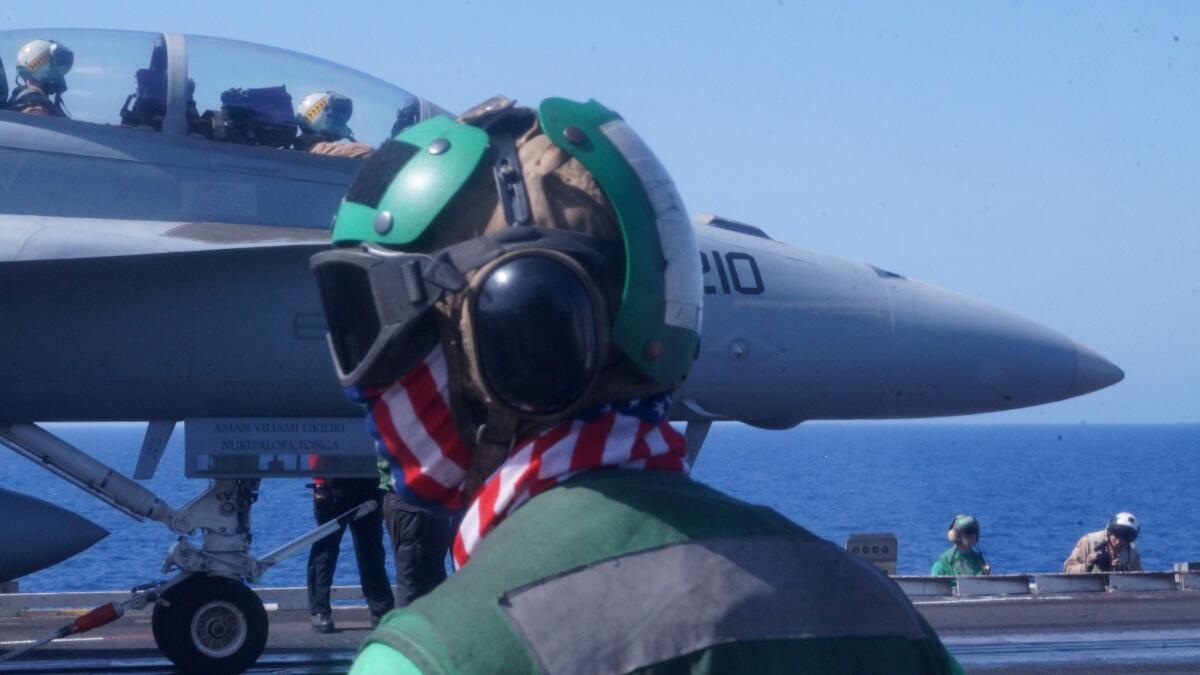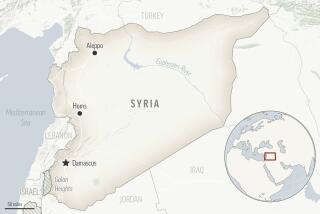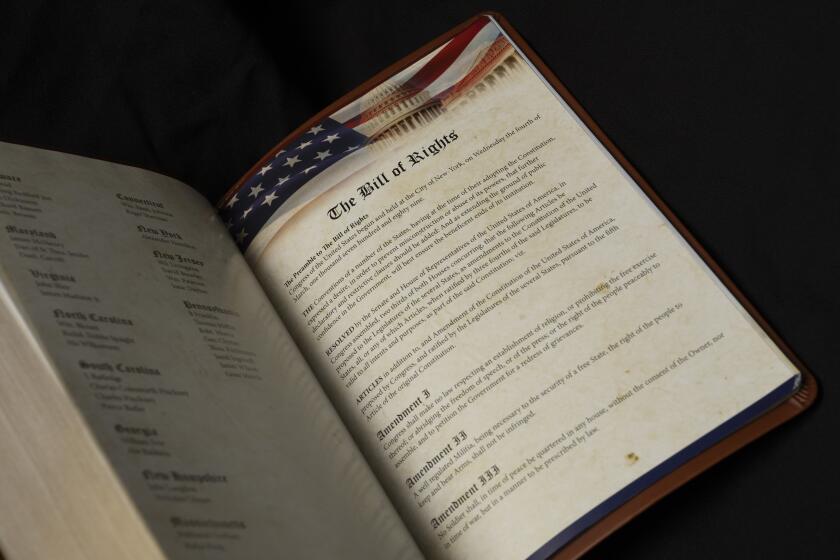U.S. military says it has killed more than 120 Islamic State leaders

Reporting from WASHINGTON — U.S. drone operators had been stalking the baby-faced British terrorist for days with infrared cameras and other sensors before the order came to kill him.
As night fell on April 25, a U.S. warplane dropped a guided bomb that obliterated the SUV occupied by 23-year-old Raphael Saihou Hostey near Mosul, Islamic State’s stronghold in Iraq.
Hostey, a recruiter for the militants, was targeted by a U.S. military campaign that has singled out and killed more than 120 Islamic State leaders, commanders, propagandists, recruiters and other so-called high-value individuals so far this year, officials said.
The leadership attacks have picked up recently due to intelligence collected by special-operations teams on night raids, from captured militants and from intercepts of emails, cellphones and other communications.
The focus on Islamic State’s command and control structure, including its recruitment and funding systems, has helped weaken the Sunni extremist group as Iraqi, Syrian and Kurdish forces press the militants on the battlefield.
The targeted killings are so well known that militants have built “counter-drone screens” of cardboard and plywood to hide leaders and fighters in parts of Raqqa, the group’s self-declared capital in Syria. They also have belittled the attacks as insignificant.
“America, do you think that victory comes by killing a commander or more?” a spokesman, Abu Mohammed Adnani, said in a recorded message released May 21. “We will not be deterred by your campaigns and you will not be victorious.”
U.S. commanders tend to agree that killing Islamic State’s leaders one by one won’t end the war any more than killing Osama bin Laden in 2011 ended the terrorist threat from Al Qaeda.
Lt. Gen. Robert P. Otto, Air Force chief of staff for intelligence, surveillance and reconnaissance, said leadership strikes provide only a short-term effect. Bombing Islamic State’s oil production sites and cash hoards have hurt the group much more.
“From my observation, when we take [high-value individuals] off the battlefield, there is a temporary impact on operations and then the adversary appoints someone else in his place,” Otto said in an interview. “There has always been somebody else to move into those positions and the fight continues.”
“We cannot kill our way out of this war,” he added.
The campaign, run by Joint Special Operations Command in Fort Bragg, N.C., emerged from the “kill/capture operations” that were used against insurgents in the Iraq war and that were expanded in Afghanistan. The command refers to each confirmed kill as a “jackpot.”
The Pentagon has issued press releases this year to crow about several major “jackpots.” They include Omar Shishani, Islamic State’s minister of war; Rahman Mustafa Qaduli, its minister of finance; and Abu Wahib, military emir for Iraq’s Anbar province.
For now, the airstrikes have “created distrust” in the militant ranks, said Rami Abdurrahman, founder of the Britain-based Syrian Observatory for Human Rights, a pro-opposition monitoring group.
Islamic State has executed at least 46 people as suspected spies in the last three months, he said in a telephone interview. Some were accused of placing GPS devices on cars or at locations to signal coalition forces, he said.
“Once they’re being targeted, they start looking within to figure out how they’re being targeted,” said a U.S. defense official, who was not authorized to speak publicly on the campaign. “It leads to them replacing people. It leads to them rolling up people that are suspected spies. It’s a cumulative disruption effect.”
Hoping to stoke the disruption, U.S. aircraft dropped 45,000 leaflets Wednesday over Akashat, an Iraqi town near the Syrian border.
On one side, pictures of four Islamic State leaders had “KILLED” in red Arabic text over their faces. The flip side had a photo of the group’s leader, Abu Bakr Baghdadi.
“Baghdadi will be killed sooner or later too,” the text read. “Islamic State leadership hides in fear of coalition airstrikes while you must remain exposed. Leave Islamic State now, before you meet your fate too.”
T. Mark McCurley, a retired Air Force colonel who commanded a Predator drone squadron that targeted high-ranking targets, said the targeting team often can quickly identify a militant leader, but then take its time before launching an attack.
“If you strike too early, it could disrupt a vital source of information,” said Nada Bakos, a former CIA analyst and targeting officer. “From an intelligence perspective, you need to determine whether it’s worth it.”
Once the military begins tracking a potential target, a digital “target folder” is created. It may hold his rank, associates’ cellphone numbers, maps of where he operates, videos of recent movements and other details.
See more of our top stories on Facebook >>
Over congested cities, the military has used drones with a sensor pod, dubbed Gorgon Stare, that carries 10 cameras — instead of one — to stalk multiple targets at once.
The intelligence ultimately is condensed on PowerPoint slides, known as “baseball cards,” that display the suspect’s photo and personal details, including height and weight, as well as targeting details.
If analysts deem a militant responsible for organizing attacks, or if intelligence indicates he poses a threat to the United States or its allies, the suspect is nominated to a combatant “kill list” controlled by a Joint Special Operations Command task force in Iraq.
Hostey, the British-born recruiter, had used the nom de guerre Abu Qaqa Britani. He had encouraged Islamic State supporters to attack civilian targets in Britain and Australia, according to U.S. officials.
He was tracked after a Syrian dentist, Mohammed Rashed, was arrested in Sanhurfa, a Turkish province on the Syrian border, on Feb. 28, according to Turkish press reports.
Rashed’s laptop computer contained information about foreigners seeking to join Islamic State, including three teenage British girls who were recruited by Hostey.
Turkish authorities provided the information to Western intelligence agencies. Two months later, Hostey was dead.
ALSO
Besieged Syrian suburbs receive international food aid for the first time in years
A $1-million shortfall is threatening help for human rights victims in the Americas
Here’s what the world thinks of Hillary Clinton’s historic candidacy
More to Read
Sign up for Essential California
The most important California stories and recommendations in your inbox every morning.
You may occasionally receive promotional content from the Los Angeles Times.











